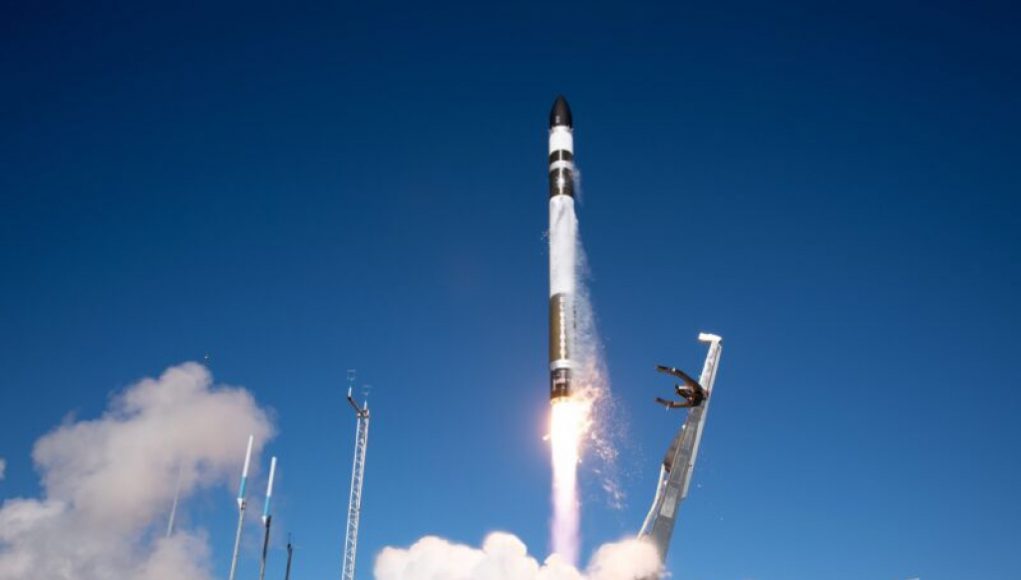Rocket Lab just achieved a major milestone in its mission to reuse orbital rockets. In its 40th Electron mission, the company successfully reused a previously flown Rutherford engine on its first stage for the very first time.
When it comes to orbital rockets, only NASA’s space shuttle and SpaceX’s Falcon 9 have demonstrated the ability to re-fly an engine. Now, Rocket Lab joins the ranks by successfully flying a rocket engine that landed in the ocean.
Following the Electron mission, which launched a satellite for Capella Space, Rocket Lab CEO Peter Beck confirmed the excellent performance of the reused engine and stage. “The data is in, perfect performance from the reused engine and the stage,” Beck shared on X, the social networking site formerly known as Twitter.
Learning to Fly Again
Electron, a small launch vehicle that debuted in 2017, has a first stage powered by nine Rutherford engines. Rocket Lab is currently the only company in the world with a small launch vehicle that has achieved successful and repeated flights. While other companies have reached orbit, such as Astra and Virgin Orbit, they have struggled with consistent success, with Virgin Orbit even going bankrupt earlier this year.
Rocket Lab has been taking steps towards reusing its Electron rockets, gathering data on their return through the atmosphere and attempting to catch them with a helicopter. Ultimately, the company found that splashing the Electron first stage into the ocean and quickly recovering it to prevent saltwater intrusion was the most feasible method.
Advertisement
Why not land on a barge? Electron’s small size would make it impossible to vertically land the vehicle without sacrificing its payload capacity. Rocket Lab engineers had to think outside the box to find a solution.
As Rocket Lab designs and develops its larger orbital rocket, Neutron, they are learning from Electron’s experiences. Neutron, intended to compete with SpaceX’s Falcon 9, will have the capability to land both back at the launch site and on a drone ship downrange. It is designed to deliver 8 metric tons into low-Earth orbit with a booster return to the launch site, 13 tons with a downrange landing, and 15 tons in fully expendable mode.
“Ideally, you would always return to the launch site because you eliminate the challenges of landing on a barge or the transit time back,” Beck explained. “That’s where we focused our efforts. But people really want to utilize that extra capacity.”
Reusable Rockets: More Than Just a Trend
The re-flight of this engine confirms that the industry’s adoption of reusable rockets is accelerating. SpaceX was once the anomaly, but now nearly every commercial development program for medium- and heavy-lift rockets incorporates reusability. Whether it’s the first stage engines, like United Launch Alliance’s Vulcan rocket, or the entire vehicle itself, like Blue Origin’s New Glenn rocket and its Jarvis upper stage, reusability is becoming the norm.
With Rocket Lab’s successful reuse of the Rutherford engine, the trend that seemed improbable just a few years ago is now irreversible.
Today saw a remarkable moment in international space exploration, as private aerospace manufacturer Rocket Lab launched a mission for the United States Air Force utilizing a novel system of reusing the engine for a second flight. This technology could revolutionize the rocket launching industry, potentially reducing costs of reaching space by hundreds of thousands of dollars and allowing for larger payloads and increased efficiency.
The mission, powered by the 13,500 pounds of thrust Rutherford engine, orbited a CubeSat payload from the US Air Force’s STP-27RD mission. What set this mission apart was the use of a reusable engine; this was the first time a rocket engine was reused for a second flight. During the launch, which occurred in New Zealand at 9:59am local time, a graphite composite motor casing combined with a controlled combustion event at the start of flight enabled the successful reuse of the Rutherford engine.
Rocket Lab has been endorsing reusability for some time now, and with this successful test launch they are one step closer to becoming a major player in the commercial launch industry. To support their mission, the company recently raised more than $140 million from investors, and intends to launch up to 15 orbital launches this year alone.
This advancement in the industry could have a huge impact in the way satellites and other hardware are deployed into space. The technology could be used to rapidly launch multiple payloads on a single rocket and significantly reduce costs, in turn allowing a larger number of payloads to be deployed at a much faster rate.
This successful launch marks an incredible milestone in space exploration and signals a future of more affordable and efficient rocket launches. As the global market for rocket launches continues to expand, the implications of reusable technology will unquestionably revolutionize the industry.




















